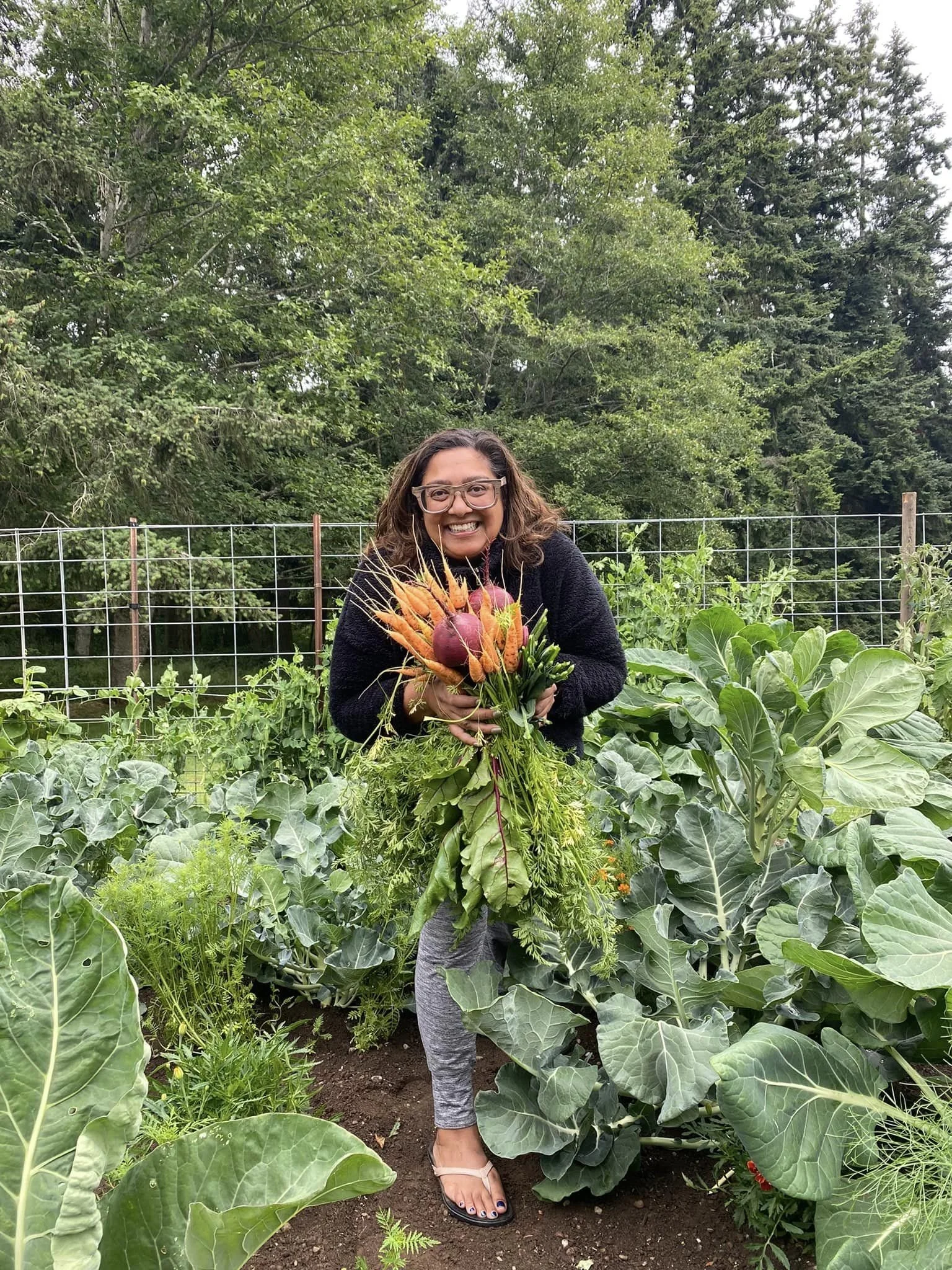From Parking Lot to Paradise: Our Future in Agrivoltaics
Advertisement
It’s a dilemma of global proportions. People everywhere dread the worsening effects of climate change and yet feel helpless to mitigate them. If they understood the true potential of green roofs and agrivoltaic technology, their moods would improve!
During graduate school for my MBA in Sustainable Business, my professor, Hunter Lovins, said something profound. She said, "All of the technology and all of the solutions to solve all the world's problems have already been created or invented. We just need the political will to do so." To this day, that's something that I've never forgotten.
Mona Das at the Capitol IRA bill signing. Photo: Mona Das
Subsequently, I learned about Germany's leadership in the fields of green infrastructure and land management. As I understood it, the German governments passed both local and federal legislation in the 1980s and 1990s that boiled down to this: If you removed greenery from beneath a building, such as ground cover or lawn, you had to add it back on the top. Combined with subsidies for green technology, and tax penalties for conventional roofs, their large-scale adoption of green roof technologies has begun to show us the real-world possibilities.
As someone who sees the future in renewables, I remember learning that if every flat roofed building in the world had a green roof on it - we would solve climate change. Chew on that for a moment!
I believe strongly that agrivoltaics are the solution to the situation in which we find our environment. Rooftop agrivoltaics are an emerging technology that combines green roofs, solar panels and food production all on the same roof. Rooftop solar has received the most national attention and support. Renewables have to be a big part of our future. Because even if the sun isn’t shining, the wind is blowing, and the ground is absorbing.
On the heels of the Public-School Green Rooftop Program (HR 1863), sponsored by U.S. Rep. Nydia M. Velázquez (D-NY) in 2020, which proposed to establish a one billion dollar grant program for installing and maintaining green roof systems on public elementary and secondary school buildings, I sponsored similar legislation in the Washington State Senate - 5732. Had my bill passed, all new buildings in Washington with a floor area greater than 10,000 square feet would have been required to include a green roof and/or solar panel on at least 70% of the roof area.
Advertisement
My plan was to bring the direct attention of our policymakers not only to the immediate benefits of such technology on the school infrastructure itself, which includes doubling the roof longevity and saving energy, but to the incredible benefits to our communities and our children!
There’s a beautiful blossoming when you grow gardens near or on a school building. Not only are you feeding the community, but you're teaching children that their actions have tangible results! They seed the soil, and see the plant grow into a carrot, or a pea pod that they can then smell, touch, taste, and be proud of.
It's hard to get kids to eat vegetables. I know my nephews don't want to eat them, but if they're directly involved in nurturing their growth, in the discovery of a little broccoli or a beet, they're more likely to give it a try! And, honestly, vegetables straight from the soil are much more delicious and nutritious.
This effort would also teach our children about the nature and technology that will help ensure their futures. In inner-city communities in particular, natural spaces have become a concept more than a known truth. Imagine being a child surrounded by pavement who suddenly has tactile experience that their small hands can plant the school roof, that then absorbs run-off water, insulates the roof, creates habitat for nurturing insects, improves air quality and reduces air temperature... I could keep going, the benefits are so numerous. It's a connection that will endure throughout their lives. But let’s not forget about the jobs…
In Washington, for example, the plant matter used to seed roofs in urban areas like Seattle, would be grown in Eastern Washington, a structure to drive economic development in rural areas. Agricultural communities grow starters, creating educational opportunities and jobs for their citizenry, and that plant matter is then planted on the roofs in the more densely populated areas of the state. Job creation and economic development explain why there are so many senators and representatives from farming communities who are interested in agrivoltaics.
Mona Das at a garden on a green roof. Photo: Mona Das
What about the benefits to human productivity and mental health? Let’s move that drab, windowless office break room to the roof, surrounded by green, growing plants, absent the sound of copiers and ringing phones. Some condominiums currently give their residents the opportunity to grow small crops and spend their leisure time in the community’s garden. Some buildings have even gone that extra mile, including recreational features such as swimming pools and basketball courts! Studies have shown that the solution to depression is often connected to nature and people. What could be healthier than to connect with your neighbors in an environment growing both food and relationships?
The concerns from some members of the building community about my proposed legislation were, as always, the cost. Despite the potential of reduced HVAC loads and decentralized rainwater management, developing new infrastructure comes with a price. In the emergent experience of a hot, fiery, or flooding climate, it’s hard to justify expenses that could take 40-years to pencil out in a large-scale application. Fortunately, most extensive green roofs, according to a study by ARUP for the General Service Administration, breakeven at about the six-year mark.
Joni Mitchell was right, we’ve paved paradise and put up a parking lot, but all is not lost. While we didn't get the bill passed, we did get a cost benefit analysis and policy options study passed, which I consider a strong step in the right direction. We should be seeing that report in 2023, and I’m confident that those findings will show that the benefits outweigh the cost - proof that rooftop agrivoltaics are the way to go for new buildings.
I'm incredibly proud that the Seattle Aquarium will be undertaking a sizable renovation, remodel, and expansion, and that they’re going to include a green roof - a teaching and learning garden, seeded only with local plant species. That’s the kind of organizational commitment that we need to incentivize widespread green roof implementation, and I’ll be doing my best in the future to make sure it happens.
Advertisement
Mona Das represents the 47th district in the Washington State Senate. Her legislation included the nation’s strictest ban on single-use plastics and Styrofoam, housing affordability, diversity, equity and inclusion training for lawmakers and public-school teachers. She has been featured in PopSugar, Bloomberg, and the Economist. Learn more at monadas.org. For more information contact Makael McDonald







